From pre-operative planning to post-operative rehabilitation, artificial intelligence and machine learning enable optimized care

The exponential increase in healthcare data combined with advances in computing power have resulted in the potential for new applications for artificial intelligence (AI) and machine learning (ML) across all specialties. In particular, lower extremity arthroplasty is well suited for the implementation of artificial intelligence due to its elective nature, high patient volumes and shifting payment modules.
Cleveland Clinic is a non-profit academic medical center. Advertising on our site helps support our mission. We do not endorse non-Cleveland Clinic products or services. Policy
Cleveland Clinic researchers from the Department of Orthopedics recently published “Artificial Intelligence and Machine Learning in Lower Extremity Arthroplasty: A Review,” in the Journal of Arthroplasty. The review summarizes developments in AI and ML in the context of healthcare, as well as recent advances and applications in arthroplasty.
The studies reviewed represent the first application of value-based payment models with an algorithm that uses preoperative, patient-specific comorbidity data to calculate risk-adjusted, patient specific payment models (PSPMs) that align with case complexity.
Atul Kamath, MD, Director of Cleveland Clinic’s Center for Hip Preservation, says this is an important application of ML both for orthopedics and medicine overall. “We’re always looking at how we optimize patients preoperatively, take them safely through their hospital stay, and make sure we avoid complications. However, much of the historical work has been based on individual institutional results that offer a limited data set by which to develop models.”
Dr. Kamath believes big data and ML helps overcome such limitations. “With machine learning and other types of deep learning modalities, we now have the ability to integrate large-scale data sets. This enables more accuracy in the predictive model due to the inclusion of higher volumes of differing variables. As a result, the model is more applicable to other institutions and a broader general population,” Dr. Kamath says.
The review highlights the fact that although ML and AI provide great potential, various limitations should be kept in mind—especially ethical considerations. This underscores the need for ML to be meticulously studied, managed and validated appropriately.
Dr. Kamath emphasizes the need to balance risks and benefits: “Whenever we delve into these new arenas, there’s always a theoretical concern that privacy may be an issue or that machine learning processes will cross ethical boundaries in some way. As we’re exploring new ideas, understanding and addressing these dynamics is of utmost importance.”
Recognizing the potential of big data and ML, leaders within Cleveland Clinic’s Department of Orthopedics established the Machine Learning Arthroplasty Laboratory (MLAL) in 2018 to create machine-learning algorithms that explore two core objectives directly related to the practice and progress of orthopaedic surgery: (1) patient-specific, value-based care; and (2) human movement.
Prem Ramkumar, MD, MBA, a fourth-year resident, provides leadership for the MLAL. “We have a unique team and a group of staff who are willing to support my vision and provide the needed resources to establish the MLAL. There, we have a supercomputer that’s dedicated to being a machine learning station. Only a few hospitals in the world have it, and we’re the only center applying it to a surgical perspective,” he says.
In addition to Dr. Ramkumar, the MLAL team includes Michael Bloomfield, MD; Atul Kamath, MD; Viktor Krebs, MD; Brendan Patterson, MD, MBA; Jonathan Shaffer, MD, MBA; and “a superstar group of medical students,” as Dr. Ramkumar refers to them. They include lead engineer Jaret Karnuta, Heather Haeberle, Sergio M. Navarro, Bryan C. Luu, and J. Matt Helm.
Thus far, the MLAL team has developed and validated several machine learning-based models for primary lower extremity arthroplasty that provide preoperative predictive analytics, as well as validation of the mHealth application with FocusMotion discussed in the review. A grant from the Orthopaedic Research and Education Foundation (OREF) is funding the latter.
Dr. Ramkumar contributed to the design of this remote patient monitoring system and says: “The system combines machine learning, wearable technology and mobile technology to not just remind patients to perform therapy exercise but also to provide real-time feedback to the patient. This enhances engagement and compliance with the treatment plan while allowing the surgeon to track progress remotely. It’s a connected experience that incentivizes mutual engagement,” Dr. Ramkumar notes.
Dr. Ramkumar says that identifying implants is another MLAL priority. “If a patient has a complication or implant failure, removing hardware can be very challenging if you don’t know who the manufacturer is—which is difficult because the manufacturing industry has changed over the years. Since we have so much experience and expertise here to do that, complex cases are referred to us.”
However, with the use of ML, such referrals may not be needed in the future. “We’re studying all the implants that we’ve ever managed here. In that way, anyone in the world will be able to take an x-ray so we can help identify what implant is inside the patient. Having that ability would decrease quite a bit of stress and cost, and help patients receive the care they need without delays due to inability to identify implant designs,” Dr. Ramkumar explains.
Dr. Ramkumar has disclosed potential or pertinent conflicts of interest, which may include receipt of payment, either direct or indirect, institutional support, or association with an entity in the biomedical field which may be perceived to have potential conflict of interest with this work.
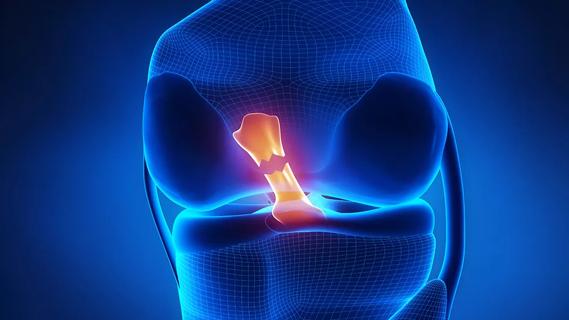
Study reports zero infections in nearly 300 patients
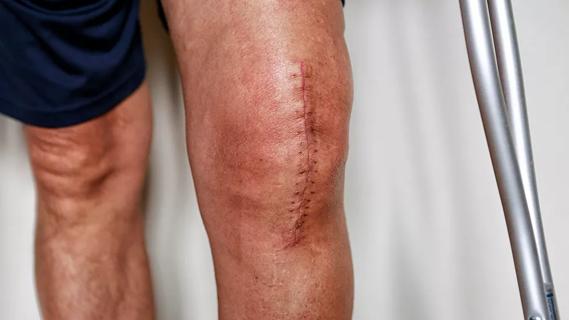
How to diagnose and treat crystalline arthropathy after knee replacement
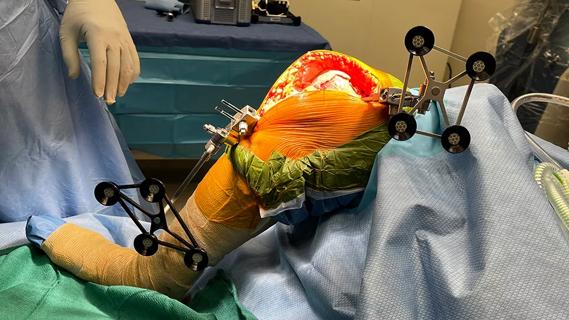
Study finds that fracture and infection are rare

Reduced narcotic use is the latest on the list of robotic surgery advantages

Cleveland Clinic orthopaedic surgeons share their best tips, most challenging cases and biggest misperceptions

How it actually compares to posterior and lateral approaches
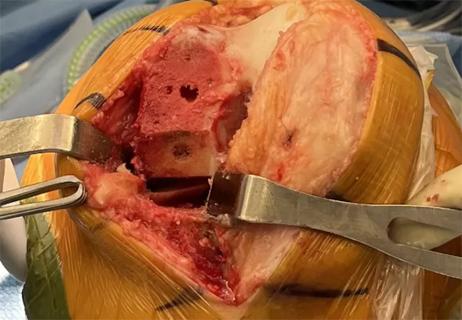
When procedure is performed by high-volume surgeons, outcomes are comparable to total knee replacement
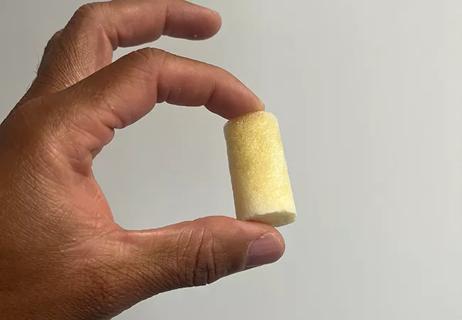
Clot substitute helps rejoin the stumps of a torn ligament